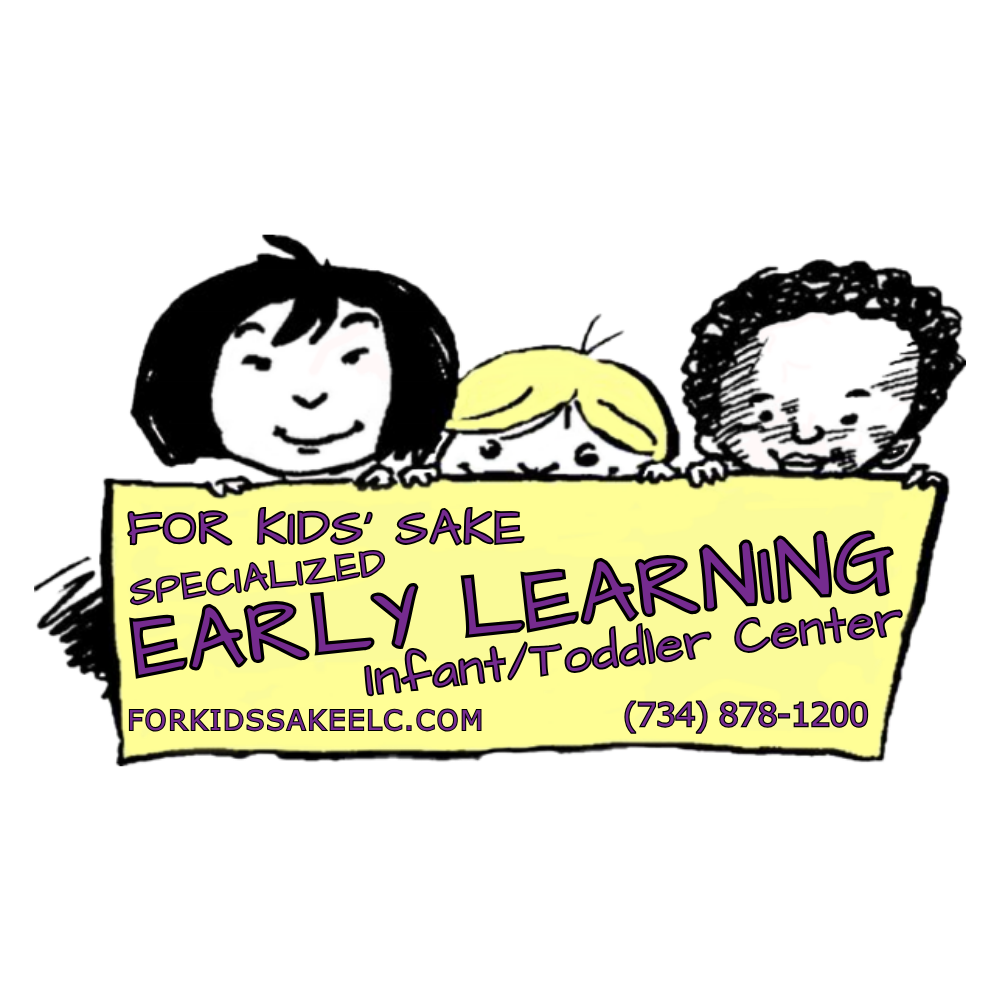We believe the best way to support literacy development is to expose children to rich language and wordplay in context. We want children to find books irresistible! You will see plenty of print in our classrooms because exposure to a print-rich environment at an early age is a predictor of later vocabulary skills.
At For Kid’s Sake Early Learning Center, you will find:
- Classrooms are stocked with beautiful, developmentally appropriate, and culturally diverse books. Teachers read aloud every day to small groups and individual children.
- Teachers use rhythm, rhyme, and song throughout the day to promote phonemic awareness, or the recognition of discrete sounds that form words.
- Activities that strengthen small muscle groups and improve coordination, preparing children to print.
- Our Back Pack Lending Library Program helps parents extend literature play with children at home.
How Children Learn to Read
- At around 1 year, they learn that objects can represent objects: a hairbrush can serve as a microphone, for example.
- Between 2-3 years, they learn that particular symbols represent particular objects: green light =go; golden arches = McDonald’s; bullseye = Target; circle with a line through it = no.
- Between 3-4 years, they learn to form symbols and letters by copying the shapes.
- They learn that words are made up of letters (i.e., the letters of their name or a STOP sign).
- They learn that particular sounds are attached to particular letters.
- They learn to decode the letters in words: differentiating P, B, D, E, F, A, H, etc.
- They learn to string together letters and sounds to spell words and reverse this process to read them. (Early spelling is phonetic: girl=grl, please=pleez, etc. Children learn patterns first, then learn exceptions over time.)
- They synthesize information (sounds and meaning) to comprehend what they read. Children develop the cognitive skills necessary for reading at different rates and in different sequences. The average age most kids can read independently is between 6 and 8 years of age. The term “Language Arts” encompasses listening, speaking, decoding skills, and printing. We plan according to children’s actual development rather than expecting them to conform to an age-based standard. Our curriculum is cumulative, so older children might demonstrate many outcomes on this page.
Infants:
- Select their own colored and sturdy board books and cloth books.
- Sing rhymes and fingerplays during transitions between activities and during circle time and walks.
- Play with real objects from books such as stuffed animals to help children make connections.
- Coo and babble with teachers during feeding, diapering, and other one-on-one moments.
- Pre-verbal children use “baby signs” to communicate their needs.
Toddlers:
- Select their own hard– and soft-cover books and practice appropriate book-handling behaviors.
- Listen to story tapes during quiet time.
- Practice small-motor coordination using crayons, chalk, and markers, and while playing with manipulatives such as pegboards, Duplos®, and blocks.
- Use simple puzzles and pattern play to practice sequencing.
- Use photos and symbols for information.
Preschoolers:
- Relate math, science, outdoor, and creative activities to the books they read.
- Read alphabet books and play with alphabet toys to learn that shapes represent particular sounds.
- Trace, cut with scissors, and form shapes with string, play dough, and other manipulatives to gain fine motor control.
- Experiment with letter toys to create sound and letter combinations and practice problem-solving.
- Use print labels and signs in the classroom and on belongings to help children decode and attach meaning to particular combinations of letters.
- Use invented spelling or drawings to document activities or feelings in a journal.
- Practice appropriate tone of voice and language, in conversations.
- Articulate information and practice listening skills during Show-and-Tell.
School Age
- Dictate stories, caption their artwork, or transcribe their own stories for publication.
- Practice handwriting in context, using to-do lists, notes to parents and friends, menus, and other hands-on writing opportunities.
- Follow text in a book as they hear the words read aloud on story tapes.
- Share books with reading buddies or “read” to younger children, as appropriate.
